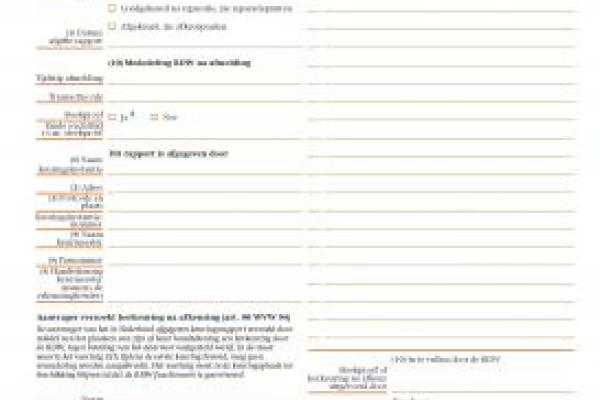General information
General overview
Roadworthiness of a vehicle is attested by a roadworthiness certificate. The certificate is printed in colour or in black and white by the testing organisation and does not have any security features. The roadworthiness certificate is centrally generated by the Netherlands Vehicle Authority (RDW in Dutch) and sent back electronically to the testing company, which prints it. It is possible to check the expiration date of the roadworthiness certificate on many websites and in many apps. It is also possible to check all non-confidential vehicle information, including the distance/odometer reading. This information is also obtainable from the RDW website. The roadworthiness certificate does not have to be carried in the vehicle when travelling within the Netherlands but should be carried when travelling abroad. The testing organisation or the RDW can issue a duplicate of the certificate, if needed.
Test frequency
|
Categories or types of vehicles |
First mandatory test |
Subsequent tests |
|
Petrol, alcohol and/or electric-fuelled passenger cars (M1), company cars (M1), light commercial vehicles and three-wheeled motor vehicles (over 400 kg) below 3 500 kg |
Within four years after the date of first registration |
Every two years. then every year after eight years after the date of first registration |
|
Diesel, liquid gas (LPG, LNG and CNG) and other-fuelled passenger cars (M1), company cars (M1) light commercial vehicles (N1) below 3500 kg and three-wheeled motor vehicles (over 400 kg) below 3 500 kg |
Within three years after the date of first registration |
Every year |
|
All other passenger cars (M1), company cars (M1), light commercial vehicles below 3 500 kg and three-wheeled motor vehicles (over 400 kg) below 3 500 kg |
Within three years after the date of first registration |
Every year |
|
All passenger cars (M1), company cars (M1), light commercial vehicles (N1) below 3.500 kg and three-wheeled motor vehicles (over 400 kg) below 3 500 kg more than 30 years old |
Within two years after the date of first registration |
Every two years |
|
All passenger cars (M1), company cars (M1), light commercial vehicles (N1) below 3.500 kg and three-wheeled motor vehicles (over 400 kg) below 3 500 kg registered before 01/01/1960 |
- |
No mandatory inspection |
|
Heavy vehicles (above 3 500 kg) registered after 01/01/1960 (N2, N3, O3, O4) |
Within one year after the date of first registration |
Every year |
|
Exceptional vehicles, i.e. vehicles used as taxis, ambulances, buses (M2, M3), and vehicles used for the transport of dangerous goods |
Within one year after the date of entry into service |
Every year |
Exceptions: Vehicles registered before 01/01/1960, other than vehicles operated or used in exceptional conditions
Responsible authorities
Documents are issued by the organisations that carry out the periodic roadworthiness tests. Approved organisations include car repair shops, companies that sell tyres, independent inspection companies and the RDW. The RDW inspects vehicles for the transport of dangerous goods (ADR) and busses. Other tests are almost all conducted by certified companies.
Websites
www.rdw.nl (Dutch)
Major changes
None

